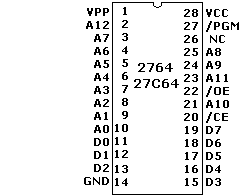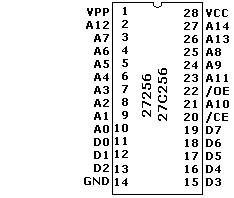chris_nh
Experienced Member
I have a question about using 27C256 ROMs ...
I'm sure the explanation has been given before, but I can't seem to find any info about it.
I see that if I"m using a 27C256 rom (w/ adapter), the rom image needs to be written 4x, right? I see the same explanation that a 27C128 rom needs the image written 2x.
I'm planning to use Ruud's diagnostic, which is an 8k image, so I need to write it to the rom 8x ??
I'm looking for an explanation of why this is necessary. Why does the ROM not just read from the beginning, where the code should be written 1x??? Why do we need to write the code multiple times in the ROM?
I'm just looking for a better understanding of why it is this way. Thanks!
I'm sure the explanation has been given before, but I can't seem to find any info about it.
I see that if I"m using a 27C256 rom (w/ adapter), the rom image needs to be written 4x, right? I see the same explanation that a 27C128 rom needs the image written 2x.
I'm planning to use Ruud's diagnostic, which is an 8k image, so I need to write it to the rom 8x ??
I'm looking for an explanation of why this is necessary. Why does the ROM not just read from the beginning, where the code should be written 1x??? Why do we need to write the code multiple times in the ROM?
I'm just looking for a better understanding of why it is this way. Thanks!


